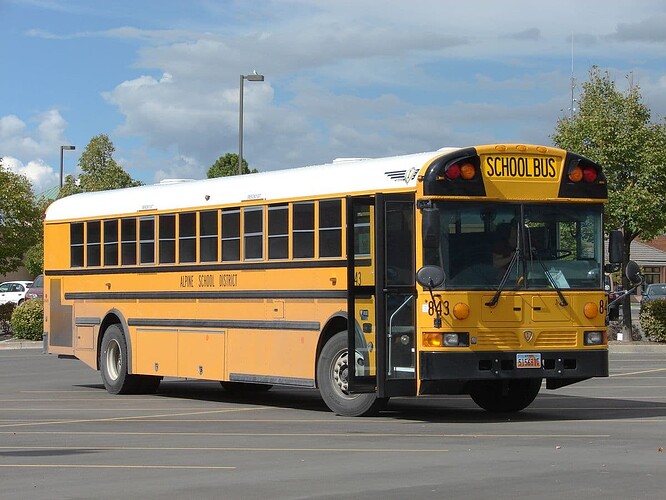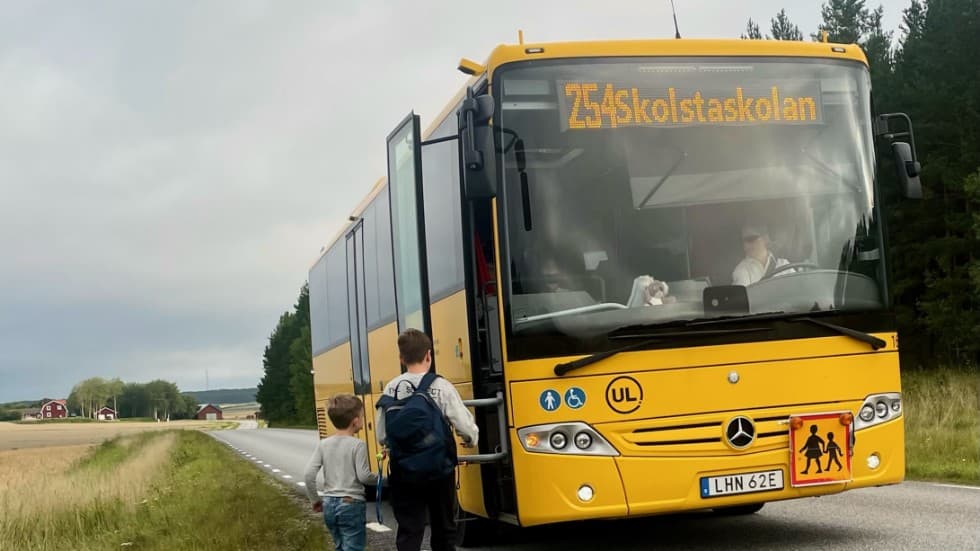I noticed someone has added school buses under the psv category in the wiki. Is this the right place? I thought school buses were “private” in the sense that they are not open to the general public. What do you think?
https://wiki.openstreetmap.org/w/index.php?title=Key:access&diff=next&oldid=2611906
That’s a good question. We have here lots of designated road side parking spots going with the a Scuola Bus post, sometimes 2-3 at one spot. All the small villages’ kids go to town, the week days parade of buses and psv’s of the regional bus company and familiar yellow ones operated by the villages in the morning and afternoon is awesome at times. No USA ‘don’t pass’ rule though. /o\
Anyway, mark it as bus stop spot and ID / JOSM presets kick in action which is the likely driver
IMHO school buses are not a public transport service. Public transport should be available to the general public. A school bus is a private service, even if it is often fully or partially financed by the public administration.
I wonder if in most places school buses are, by default, allowed to follow the psv traffic rules? For example, using a bus lane.
I think there’s likely to be ambiguity by jurisdiction. Under UK law, they would presumably be classed as PSV:
(so particularly for part a)
Typically in the UK, school buses are regular buses or coaches hired by the local authority or school from a private provider. This is presumably quite different to the US (for example) and so they may not fit a (different) PSV definition elsewhere.
This is another such a case where the globalness of OSM comes into play. In Sweden (or at least in my county), school buses are open to the public (though with the caveat that school children have priority), operated by the same operator as the “normal” buses and are even included in the operators app.
So at least here, school buses definitely should count as public transport in OSM.
This might be the case in your area, but that doesn’t make it true everywhere.
so what is the conclusion, should they be presented inside the “psv” category or at the same level? This is the current hierarchy:
- By use
- psv=* - public service vehicle
 bus=* - a heavy bus acting as a public service vehicle
bus=* - a heavy bus acting as a public service vehicle
 school_bus=* - a bus transporting school students
school_bus=* - a bus transporting school students
 taxi=* - taxi
taxi=* - taxi minibus=* - a light bus acting as a public service vehicle
minibus=* - a light bus acting as a public service vehicle- share_taxi=* - a light bus acting as demand responsive transit
 hov=* - high-occupancy vehicle/carpool, varies by location; e.g., at least one passenger
hov=* - high-occupancy vehicle/carpool, varies by location; e.g., at least one passenger
- carpool=*
- car_sharing=* - car sharing vehicles
- emergency=* - category: emergency motor vehicles; e.g., ambulance, fire truck, police car. Note that emergency vehicles are generally not restricted by legal access rules. For places explicitly designated for emergency access consider emergency=designated.
 hazmat=* - motor vehicles carrying hazardous materials
hazmat=* - motor vehicles carrying hazardous materials
 hazmat:water=* - motor vehicles carrying materials which can pollute water
hazmat:water=* - motor vehicles carrying materials which can pollute water
 disabled=* - holders of blue badge, UK, or other such disabled persons’ permit. Used on traffic signs to exempt said group from access restrictions; not just regarding parking
disabled=* - holders of blue badge, UK, or other such disabled persons’ permit. Used on traffic signs to exempt said group from access restrictions; not just regarding parking
A such bus with priority for school children integrated into the public transport system and therefore available to the general public is not a school bus as I referred to above.The school bus I am referring to is not part of the public transport system, it is a private and exclusive service for school children, not available to the general public.
The heading of the topic mentions public transport, but the link is to access tagging. It seems this has led to two different questions being discussed:
- Are school buses public transport?
- Are vehicles operating as school buses classified as public service vehicles, i.e
roads/lanes/parking restricted to PSVs would be open to school buses?
To me these seem to be independent of each other. The second question seems dependent on local legislation. In the example quoted by @Casey_boy it seems that school buses (and
maybe tour buses) could be PSVs even though they do not provide public transport.
I’ve been looking at a few Irish websites. The definition of a Public Service Vehicle seems similar to the UK example: the key point is that they transport passengers for a fee or reward. It doesn’t matter if the passengers are limited to a specific group.
This page makes clear that school buses are a category of PSV requiring an additional license as well as a PSV license:
https://www.gov.ie/en/service/b4e9a-public-service-vehicles-psv-licences/
This is separate from whether they provide public transport or not.
So for Ireland my answers would be: school buses do not provide public transport, but legally they are PSVs.
I think that the use of a bus as a school bus, exclusively to take children to school, is a sufficiently specific use for a bus to appear in this list, although I would add it as another item in the list, at the same level as the others (not hierarchised).
Yes, a “school bus” to you might not be part of the public transport system. That doesn’t mean that it might never be included therein. Here, these buses are very clearly school buses (“skolbuss” in Swedish).
In some parts of the world school buses are very distinct from other buses, and I hold no opinion on whether they should be included in the definition of public transport in OSM:
Here, they are not, but they are still very much a school bus (not the route number (254), which you’ll find on departure boards etc. together will all other buses) yet it would make very little sense not to handle them like all other public transport in OSM (possibly with some supplemental tag to make the priority clear):
Well, where do tour buses belong? I guess they are inside psv?
Thinking about it, maybe it is not very relevant, because typically you will have either school buses (rural areas) or lanes reserved for psv (urban areas)? If the situation is that they sometimes are psv sometimes not, I would put them under the “by use” alongside the psv, not inside it.
if the word “tour bus” is about coaches that can be rent as a group to make a tour, then these are not “psv” according to the legislation where I know about it. The same applies to those “tour buses” that are going round in circles in the city, helping to congest already crowded roads and blowing their diesel emissions into the already bad air ;-), where you can hop on and off, aiming at tourists (and completely different pricing compared to public transport).
In regards to access rules, they count as PSVs here (as you say that mostly applies to urban areas while school buses are more common in rural areas so it usually shouldn’t matter, but I wouldn’t be surprised if there are plenty of exceptions to both rules).
“Bus lanes” in Sweden may be used by all vehicles that are in “linjetrafik” (could be translated as “following timetables”), which despite what even Wikipedia says for the sign (public transport) also includes vehicles transporting goods, as long as they follow a time table.
Ah the joys of trying to find a categorization scheme that fits every place on earth ![]()
To my mind they are still offering a “public service” even if they aren’t considered public transport.
I’m finding it difficult to search on mobile right now bu I think we have some sort of “tourist only” flag for routes.
It is not “to me” only. Public transport system should be accessible to the general public. The opposite is private transport.
I have no idea what kind of implications there are for
school_bus=designated as it is not documented what the difference is
to “yes”, but it is 95% of values. ![]()
https://taginfo.openstreetmap.org/keys/school_bus#values
https://wiki.openstreetmap.org/wiki/Key%3Aschool_bus
For the case where they are explicitly sign posted (e.g. “except
school buses”) it is not relevant whether they are orthogonal or a
subset of psv, the interesting question would be if “psv=yes” includes
school buses or not.
I think this thread so far has shown that the answer is the rather disappointing “it depends on jurisdiction” ![]()
(as a matter of practicality, if I were to use that tag as either a producer or consumer in Sweden, I would say it definitely includes school buses, as there, as mentioned, is no relevant difference)
And here school buses are accessible to the general public, so even disregarding any other definition they are included in your definition of a public transport system.
This discussion has become circular. We are back to square one.

